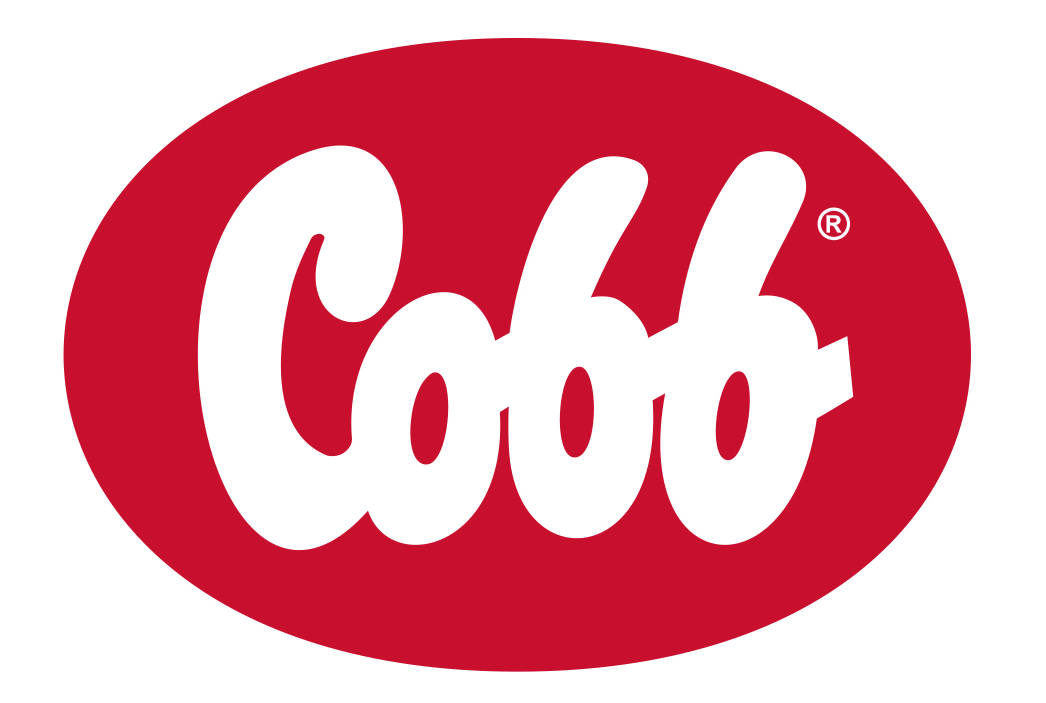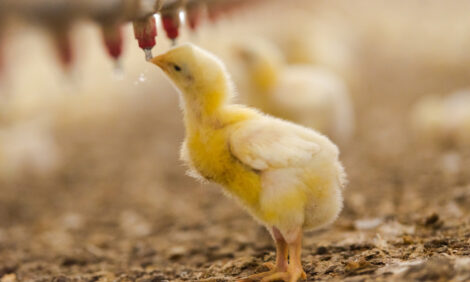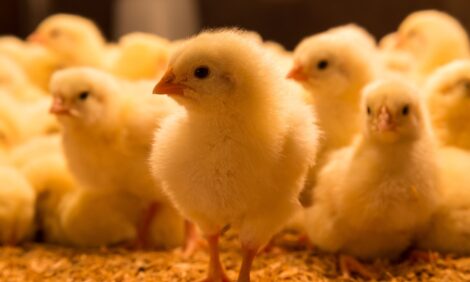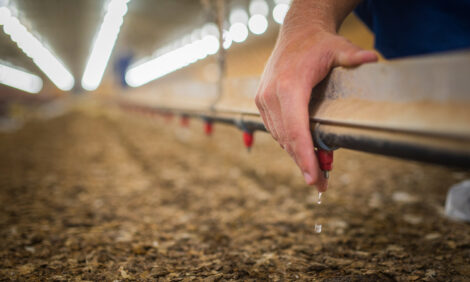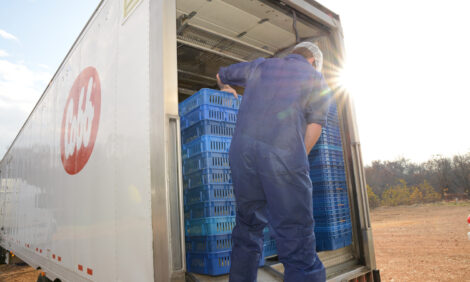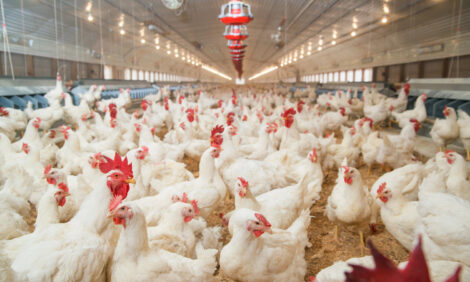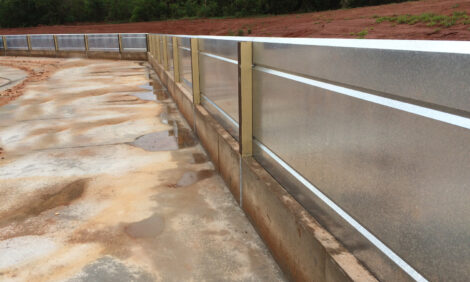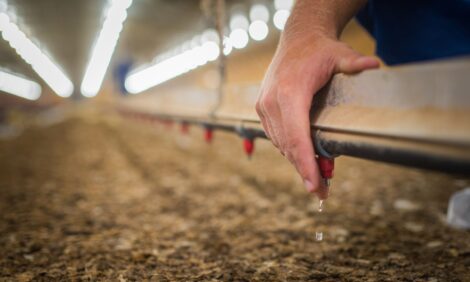



Cobb Breeder Management Guide: Lighting programs
Learn more about poultry lighting programsPart of Series:
< Previous Article in Series Next Article in Series >
Editor's note: This article is an excerpt from the Cobb Breeder Management Guide and additional articles will follow. The Guide was designed to highlight critical factors that are most likely to influence flock performance. The management recommendations discussed were developed specifically for Cobb products. The recommendations are intended as a reference and supplement to your own flock management skills so that you can apply your knowledge and judgement to obtain consistently good results with the Cobb family of products. To read or download the complete Guide or to view Cobb's other management guides, click here.
There are 3 lighting programs based on housing configurations:
- Dark out rearing to natural daylight production.
- Dark out rearing to dark out production.
- Natural daylight / brown out rearing to natural daylight production.
Dark out rearing to natural daylight production
Dark out houses should provide total light control. Start chicks on 23 hours of light reducing to eight hours by two weeks of age (see section 2.3 in brooding design). The 8-hour day length will begin when feed cleanup times and bodyweights are on standard. Generally, the 8-hour day length can start when the birds consume their everyday restricted feed in 4 hours or less - usually 14 to 15 days. The 8-hours of light day length will continue until 21 to 22 weeks (147 to 154 days) of age when photo stimulation begins.
In rearing, 9 hours of light are used when the birds are being transferred to open sided production houses during the summer months with a natural light duration of more than 13 hours. Another option is to photo stimulate the hens in the rearing house between 147 to 154 days of age by increasing artificial light from 8 to 12 hours. Hens then are transferred at 154 days of age and given 15 to 16 hours of natural day light, which will prevent over stimulation. It is not always possible to apply this program based on the down time between flocks. The artificial light system must provide a minimum of 50 and a maximum of 100 lux (5 to 10 fc) during the production period, with 70 lux (7 fc) being a good average light intensity for females and males.
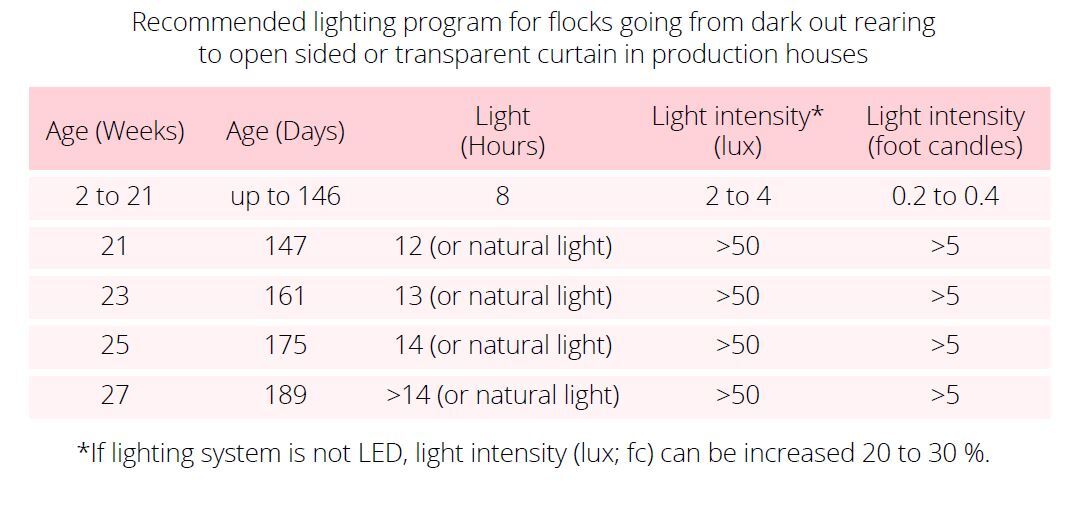
Maximum natural light hours will always depend on the location’s latitude for open sided houses. Flocks being transferred in autumn can receive only a maximum of 14 hours of natural light, but flocks transferred to open production houses in the summer will need to adjust the maximum light to the local hours of natural daylight.
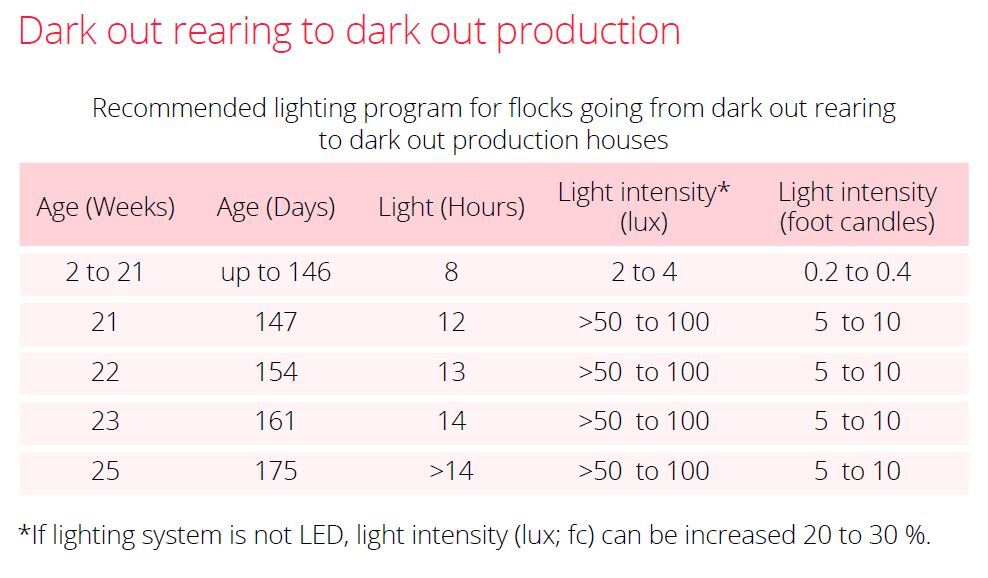
Fast feather females - photo stimulation starts between 147 and 154 days. Slow feather females - 150 to 154 days. In extreme cases, when females are under weight and under fleshed with insufficient pelvic fat reserves, photo stimulation can be delayed to 161 days.
Natural daylight or brown out rearing to natural daylight production
It is not recommended to rear breeders in natural daylight houses. However, this rearing system is successfully used in regions close to the equator where the variation in natural day length is minimal. During rearing the flocks can remain on natural light in all seasons until photo stimulation. The program used will depend on natural day length when the flock reaches 140 days of age. When the natural day length is insufficient, provide extra light at both the beginning and the end of the natural day light period to be certain that the intended day length is achieved. Additional light added during this period must be 80 to 100 lux (8 to 10 ft candles) to ensure that the birds are stimulated sufficiently.
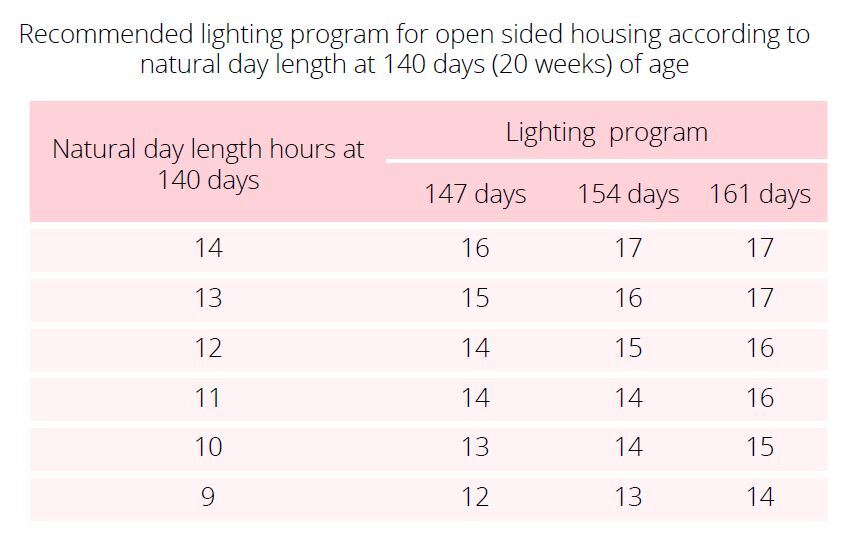
Brown out rearing houses use a black shade cloth, plastic or combination of both placed along the sides of the house from the roof down. This system blocks up to 80 % of the natural light, hence the term brown out rearing. The challenge with this system is finding the balance between darkening the house and ventilation.
Brown out rearing can be successful in housing situated in regions where the natural light hours do not vary significantly. In regions outside 10º latitude north and south, day length variability will induce a delayed onset of production, causing dramatic drops in hatching eggs.
In open-sided and windowed houses, local day length conditions require that a specific program be adopted for each flock which can be optimized with the technical services representative.
Flock Sexual Uniformity
Flock uniformity greater than 70 % allows simultaneous increases in light duration (+4 hours) and intensity. Simultaneous increases will ensure most of the flock will be stimulated and a high sexual uniformity can be obtained. In this way, most of females will participate in peak production.
When uniformity is poor, the birds in the flock that are not yet ready for photo stimulation (under weight, under fleshed, too little pelvic fat) can be overstimulated. Photo stimulating birds that are not ready may lead to lower peak production and persistency with higher numbers of double yolks, floor eggs, egg peritonitis, mortality, and culls. Therefore, when flock uniformity is less than 70 %, the flock will require more and smaller incremental increases in light duration and intensity. For these flocks, it is recommended to first Increase light intensity to 30 to 35 lux (3 to 3.5 fc) and increase light duration for 3 hours (from 8 to 11 hours per day). A week later, increase light duration for an additional 2 hours (from 11 to 13 hours per day) and intensity to a minimum of 50 lux (5 fc). The final increase should be a week later to an intensity of 70 lux (7 fc) as well as increasing duration for an additional hour (see table below for details).
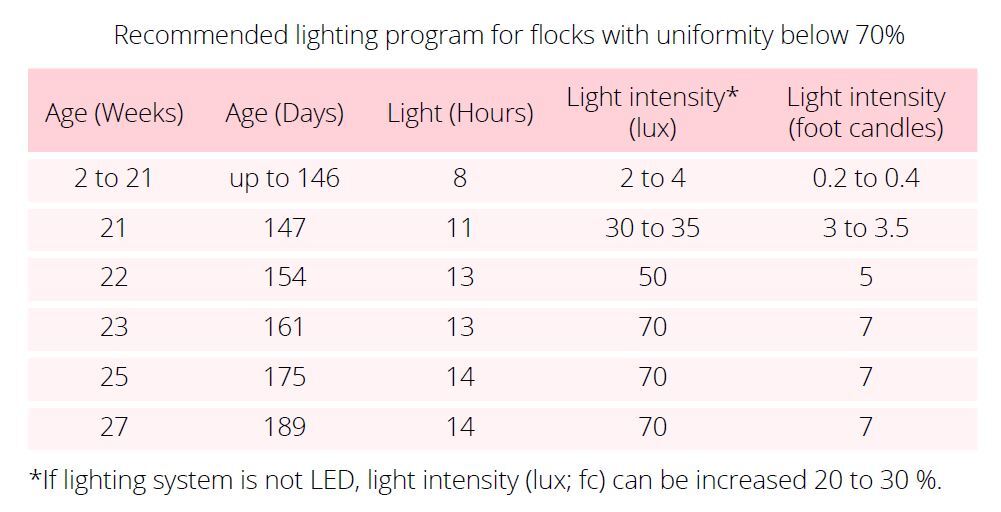
Males and females can follow the same lighting and photo stimulation program prior to mixing. However, if males are reared separately, the light program for males can be different from the females depending on the male line used. See specific lighting recommendations for each male line in our supplements (https://www.cobb-vantress.com/resource/product-supplementsresource/product-supplements).







